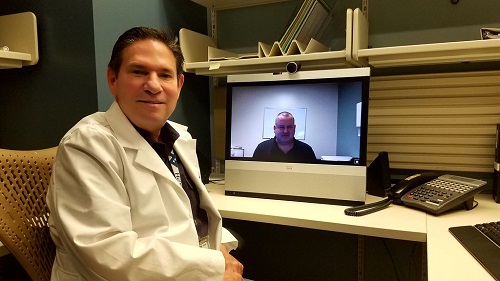
By Suzanne Gordon
The three caregivers we meet in The Providers face daunting challenges as they try to deliver medical and mental healthcare to patients in rural New Mexico. Sadly, their struggles are reproduced all over America because for decades the nation has failed to address the problem of delivering healthcare outside of urban and suburban areas. Even though 60 million – or 19.3% – of Americans live in rural areas, they can’t get the healthcare services they desperately need. It’s therefore not surprising that, in 2016, five of the ten states with the highest rates of deaths due to opioid abuse were rural (interestingly New Mexico is not one of them).
Whether it’s finding someone who will treat opioid addiction, scheduling a routine primary care visit, making an appointment with a cardiologist, oncologist, psychologist or psychiatrist, rural Americans are often out of luck.
The nation has been plagued by a persistent shortage of primary care physicians (PCPs). A study by the American Association of Medical Colleges (AAMC) warns that the U.S. will need 52,000 more PCPs by 2025. The problem is worse in rural areas, which is why the Health Resources and Services Administration has designated many as primary care shortage areas. In spite of documented need, not enough physicians in training are choosing to enter primary care.

Indeed, only 4% of medical school graduates surveyed in 2016 would consider practicing in a small community, whether as primary care or specialty providers.
Rural residents also have trouble getting care – whether for elective surgery or an acute care crisis – in a conveniently located hospital. Between 2010 and 2019, 102 rural hospitals have closed and it is estimated that another 700 will close in the next decade.
When it comes to mental health treatment, the situation is even direr. The Substance Abuse and Mental Health Services Administration (SAMSHA) found that 77 percent of U.S. counties face a severe shortage of practicing psychiatrists, psychologists, or social workers; 55 percent of U.S. counties – all rural – have no mental health professionals at all. According to studies by the National Institute of Mental Health, 40 percent of people with schizophrenia and 51 percent of people with bipolar disorder go untreated in any given year. Many of them live in rural areas.
So what is being done to address this problem?
Not enough, but there are some shining examples of efforts to improve rural healthcare. A number of medical schools are trying to attract medical students who actually want to practice in rural areas and will do so when they graduate and finish residency programs.
Among these are the WWAMI (Washington, Wyoming, Alaska, Montana, and Idaho) program at the University of Washington Medical School, and North Carolina’s Area Health Education Center, which are trying to increase the number of primary care physicians who will work in underserved areas. One of the most successful programs — the Physician Shortage Area Program (PSAP), at the Sidney Kimmel School of Medicine at Thomas Jefferson University in Philadelphia — has been operating since 1974.
As family medicine physician Howard Rabinowitz, co-director of the PSAP, told me, over the past four decades the program has trained about 400 graduates. 40 percent of them have actually gone into—and stayed in—practice in rural areas. By partnering with local undergraduate programs, the PSAP identifies future medical school students who come from rural areas and want to return to work there. Students are encouraged to apply to the PSAP. If accepted, they form a cohort of about ten students a year—about 270—and are mentored through medical school by program faculty.
The program helps them to resist the inevitable peer pressure they may encounter from medical students or faculty who look down on both primary care and rural practice. The program’s success, Rabinowitz says, is directly due to the fact that it eschews the traditional model used to entice medical students into rural practice. “We identify people who want to do this as opposed to going to people who don’t want to do it but will – at least temporarily – because they get loan repayments or scholarships.”
Veterans Health and Telehealth
Another promising example of rural health delivery is the Veterans Health Administration. Millions of the VHA’s nine million patients live in rural and remote areas. The VHA reaches them through clinics located in smaller towns and cities but also through its cutting edge telehealth capacity. (Telehealth includes real-time interactive video conferencing, sometimes with supportive peripheral technologies, mobile monitoring, and messaging, to assess, treat and provide care to a patient remotely.)
As a global leader in telehealth, the VHA now delivers care at over 900 locations. Making use of continually evolving communication and information technology, patients separated from providers by geographical location are able to receive high fidelity services in their homes or in VHA facilities. In 2016, nearly 12 percent of veterans – representing 2.17 million episodes of care – received some of their care via telehealth.

Telehealth practitioner Dr. Paul Maas (foreground) is joined via video by Rod Miles, facility telehealth coordinator at Bay Pines VA Healthcare System. Coutesy VA.gov.
Here are only a few examples I have personally observed:
- A veteran in rural Vermont was able to get physical therapy from a VA therapist in North Carolina.
- Integrated pain teams at the San Francisco VA’s Medical Center at Fort Miley deliver services to outlying clinics in Ukiah, Eureka, and Clear Lake, California. This helps providers reduce opioid dependency for veterans in rural areas.
- At the same facility, a neurologist is able to deliver cognitive behavioral therapy to a veteran with psychogenic epilepsy who lives six hours away from San Francisco.
- VHA nurses at Las Vegas VHA use telehealth capacity to monitor and blood pressure, and other chronic problems of veterans through in-home or mobile monitoring systems.
What we need, of course, are many more programs that address the crisis in rural health.
Which is why documentaries like The Providers are so important. By bringing us into the lives and homes of both providers and patients we can understand the crippling “diseases of despair” like drug and alcohol use and suicide that plague rural communities. After all, we can never hope to address the healthcare problems of rural Americans if their suffering is as remote as the communities they live in.
Suzanne Gordon is an award-winning journalist and author. She has written for The New York Times, The Los Angeles Times, The Washington Post, The Atlantic, The Nation, The Washington Monthly, The American Prospect, The Globe and Mail, The Toronto Star, JAMA, The Annals of Internal Medicine, The BMJ, and others. Suzanne is the author or co-author of 11 books including Life Support: Three Nurses on the Front Lines, Beyond the Checklist: What Else Healthcare Can Learn from Aviation Teamwork and Safety, and The Wounds of War. She is an Assistant Adjunct Professor at the UCSF School of Nursing and an Affiliated Scholar with the University of Toronto Faculty of Medicine’s Wilson Centre.

